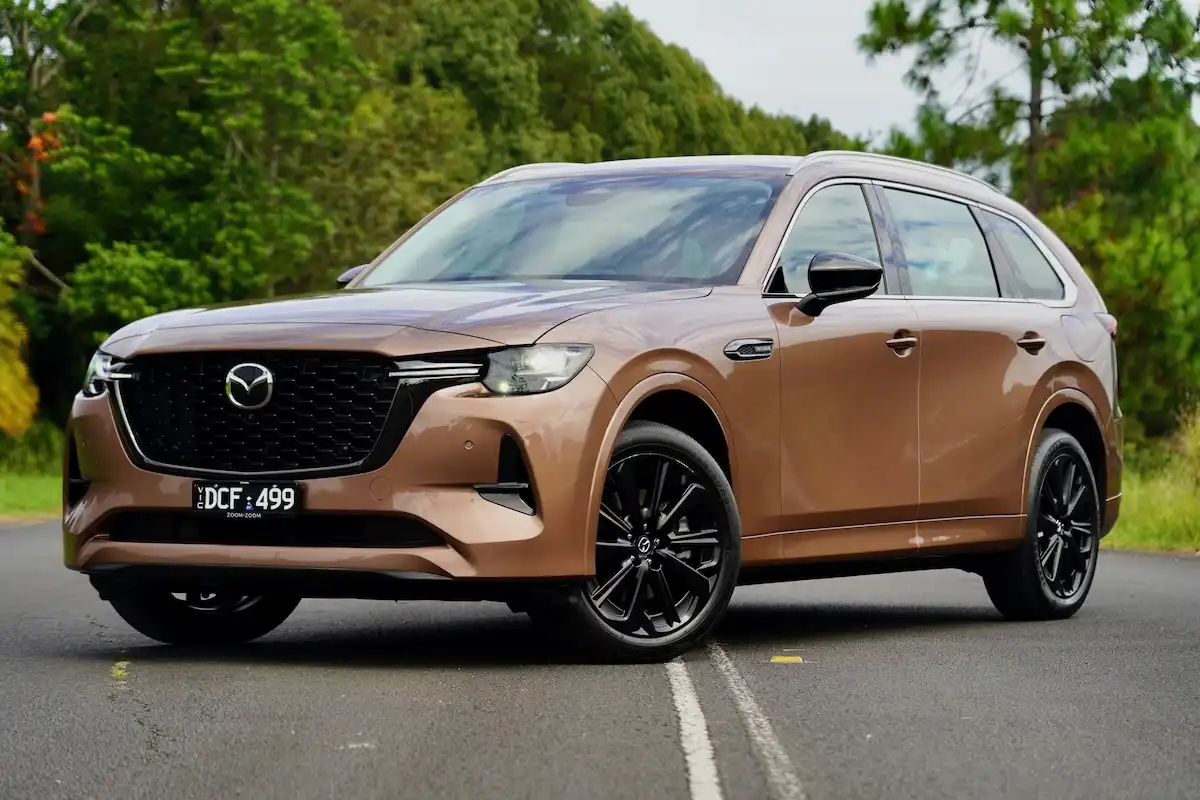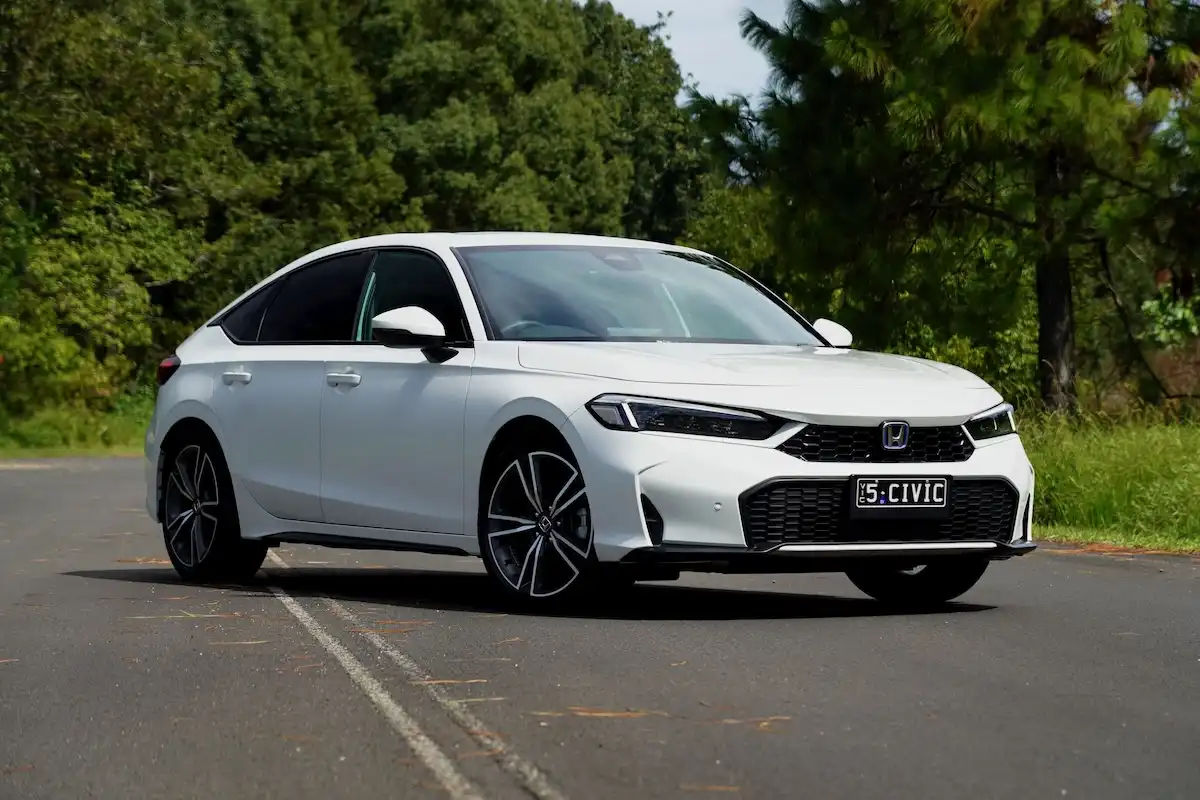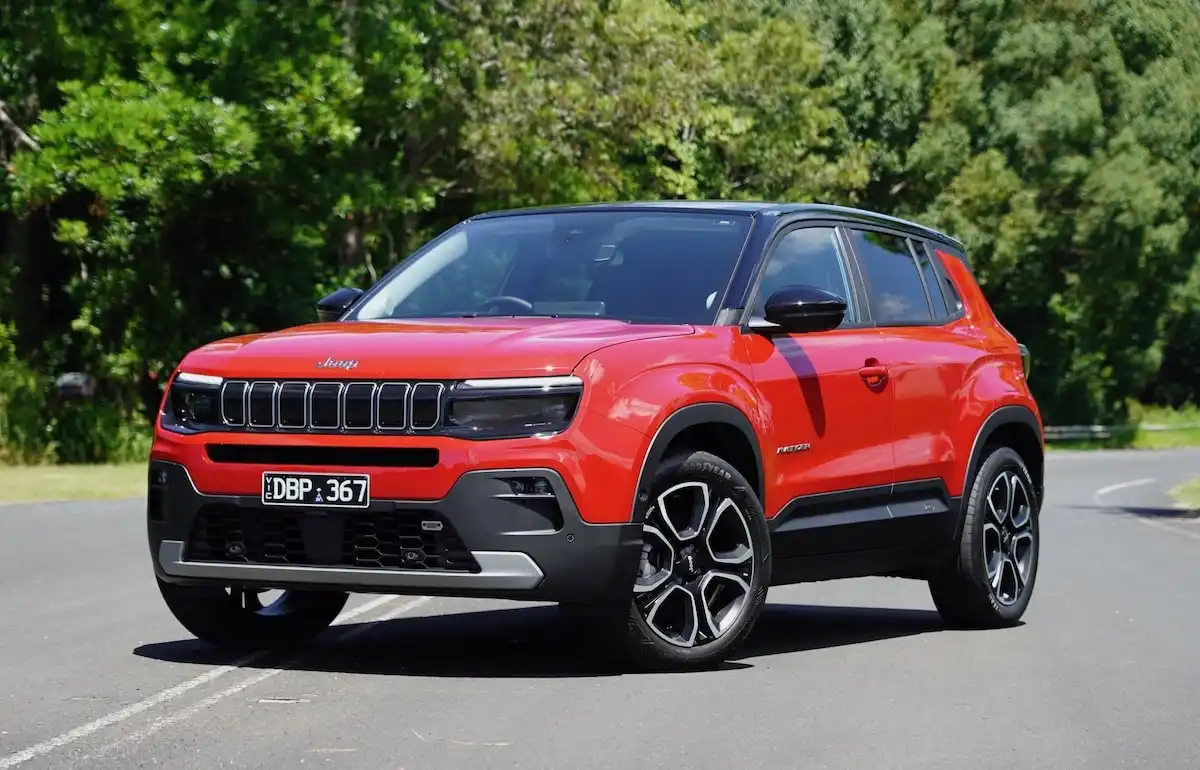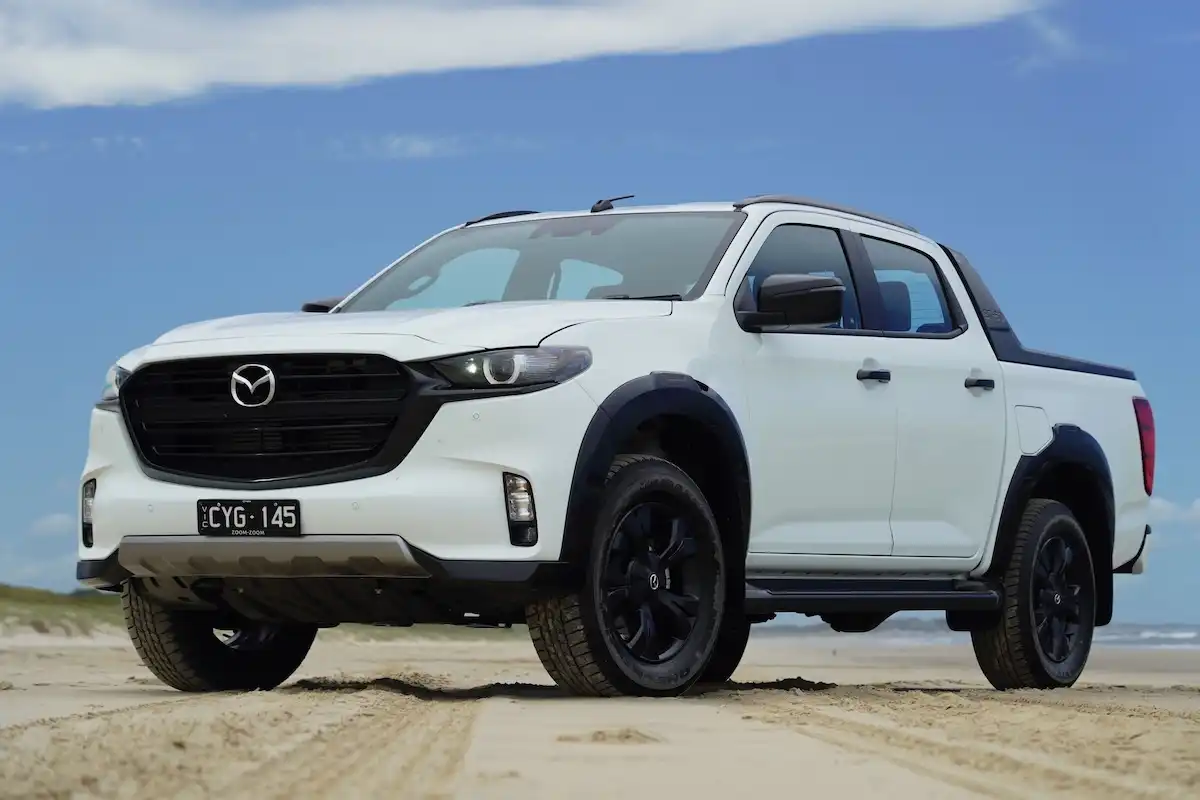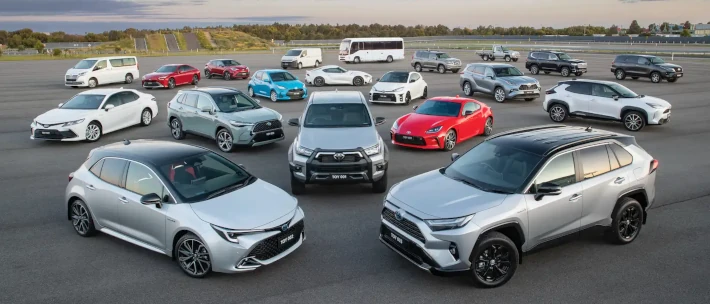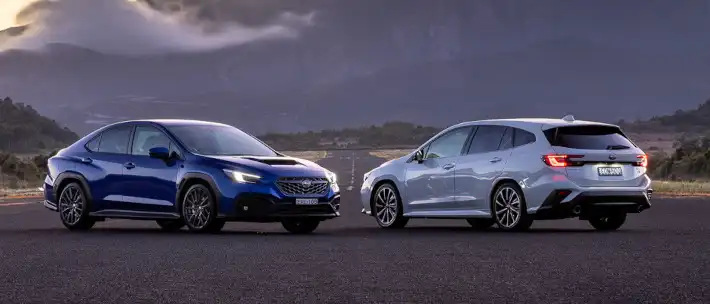For its latest model year, Isuzu has given its almighty D-Max range some fairly significant upgrades, with a series of styling improvements and a wider range forming the base of its expanding D-Max range.
Most of the hardware underneath remains unchanged, however, which begs the question of how well the latest Isuzu D-Max range stands up against its fierce ute rivals. Let’s take a closer look to find out.
Starting Price: $32,200
OnlineAuto Savings: Enquire now
Isuzu D-MAX - X-TERRAIN (4x4) Specifications
| Model Date | 2023 |
| Make | ISUZU |
| Model | D-MAX |
| Series | RG1 MY23 |
| Variant | X-TERRAIN (4x4) |
| Body | CREW CAB UTILITY |
| Fuel type | DIESEL |
| Transmission | 6 SP AUTO SEQ SPORTS |
| Drive | 4x4 |
| Engine | TCDI |
| Engine capacity | 2999 |
| Engine configuration | DUAL OVERHEAD CAM / 16 valves |
| Engine RPM | 3600 / 1600 |
| Cylinders | DT4 |
| Torque | 450 |
| KW | 140 |
| Fuel tank size | 76.0 |
| Fuel usage specs | 8.0 / 0 |
| CO2 | 207 |
| ANCAP security rating | 5 |
For more details and other variants, check Isuzu D-MAX car page.
Get in touch with one of our Car Buying Specialists today.
Request a quoteHow Much Does It Cost?
Prices for the D-Max in 4x2 form range from $32,200 for the entry-level SX Single Cab and stretch out to $39,700 for the 4x2 SX Space Cab and up to $53,00 for the range-topping 4x2 LS-U Crew Cab.
Opting for a 4x4 Cab Chassis means starting prices jump to $42,200 for the SX Single Cab 4x4, with the SX Space Cab priced at $47,700, the LS-M 4x4 Crew Cab priced at $53,800 and the range-topping LS-U Crew Cab 4x4 priced at $59,500.
The D-Max 4x4 Ute range kicks off from $50,200 for the SX Crew Cab, with prices rising to $53,300 for the LS-M Crew Cab, $59,000 for the LS-U Crew Cab, $63,500 for the LS-U+ Crew Cab and topping-out at $67,500 for the range-topping X-Terrain Crew Cab.
How Much Can OnlineAuto Save You?
Using OnlineAuto’s car purchasing service, take advantage of the expertise of one of our car specialists to assist you in finding the best value model for you.
What Features Does the Isuzu D-Max Have?
Isuzu’s entry-level D-Max SX comes riding on a set of 17-inch steel wheels and receives a rear locking differential for 4x4 variants, halogen headlights, cloth upholstery, a rear-view camera, vinyl floor covers tailgate assistance with gas struts and a 7.0-inch infotainment system with Apple CarPlay & Android Auto.
Stepping up to the D-Max LS-M adds a set of 17-inch alloys, as well as automatic Bi-LED headlights with LED daytime running lamps and fog lights, a two-tone front grille design, upgraded cloth upholstery, body-coloured mirrors and rear parking sensors.
The D-Max LS-U grade picks up a set of 18-inch alloys wrapped in Bridgestone 684II HT tyres, and receives a tub liner, LED rear combination lights, side steps, keyless entry & start, upgraded interior highlights, leather-wrapped gear lever, lumbar support for the driver’s seat, chrome exterior highlights and an upgraded 9.0-inch infotainment system.
The D-Max in LS-U+ form picks up leather upholstery with heated front seats and an eight-way power-adjustable driver’s seat.

Finally, the range-toping D-Max X-Terrain receives a set of grey 18-inch alloys, front parking sensors, matte black tonneau cover, dark grey sports bar, side steps, mirrors, roof rails and wheel arch covers, as well as upgraded leather seats with red stitching and a series of X-Terrain interior highlights.



Range Features:
-
17-inch steel wheels
-
Rear locking differential (4x4 variants)
-
Halogen headlights
-
Rear-view camera
-
7.0-inch infotainment system with Apple CarPlay & Android Auto
-
17-inch alloys (LS-M)
-
Bi-LED headlights with LED daytime running lamps and fog lights (LS-M)
-
18-inch alloys with Bridgestone 684II HT tyres (LS-M)
-
Side steps with chrome exterior highlights (LS-M)
-
9.0-inch infotainment system (LS-M)
-
Leather upholstery with heated seats (LS-M)
-
Matte black tonneau cover (X-Terrain)
-
Dark grey sports bar, side steps, mirrors, roof rails and wheel arches (X-Terrain)
-
Upgraded leather seats with red stitching (X-Terrain)
Isuzu D-Max Colours
The Isuzu D-Max range is available with Mineral White as a no-cost colour option, while Mineral White, Basalt Black, Neptune Blue, Obsidian Grey and Mercury Silver remain a $500 optional extra paint finish.
The D-Max is also available in Volcanic Amber, Magnetic Red, Granite Grey and Moonstone White in special variants like the LS-U, LS-U+ and the X-Terrain.


Is it Comfortable to Drive?
While the D-Max been designed primarily as a specialist work tool, the adaptable platform and capable suspension hardware make it a surprisingly well-rounded daily driver for a mix of work and family duties.
It’s important to note that there’s two engines on offer within the D-Max range, with entry-level variants picking up a 1.9-litre turbo-diesel unit producing 110kW of power and 350Nm of torque, which is paired with either a rear- or four-wheel drive system and both manual and automatic transmissions.
The majority of the range, however, picks up a 3.0-litre turbo-diesel four-cylinder producing 140kW of power and 450Nm of torque, which is channeled to your choice of a rear- or four-wheel drive system via a six-speed manual or automatic transmission.
On the road, the smaller of the engines is perfectly acceptable and offers a healthy amount of torque, though its pulling power and off-road abilities fall considerably short of the fully-fledged 3.0-litre turbo-diesel unit.

Around town, the D-Max is surprisingly civilised thanks to its supportive suspension system that is particularly comfortable on smooth city streets, while the weight of the steering rack remains approachable for drivers new to the ute segment.
When pushed off road, the D-Max platform is remarkably sturdy and performs impressively on a mix of loose surfaces and challenging inclines.
4x4 variants pick up a low range transfer box and a locking rear differential as standard which, combined with the healthy amount of torque on offer, gives the D-Max some serious off-road traction and performance.
All up, while the D-Max isn’t the most refined of the dual-purpose utes on the road, it has evolved to the point that it remains incredibly comfortable as a daily driver and has become far more user-friendly in its latest form.

Is the D-Max a Good Workhorse?
If you’re looking for maximum loading and pulling power, it’s important to note that towing capacities and payload figures change considerably between both of the D-Max’s engine options.
The entry-level 1.9-litre turbo-diesel has its braked towing capacities capped at 2800kg in manual and 3000kg in automatic variants, both of which increase to 3500kg in D-Max models powered by the 3.0-litre turbo-diesel unit.
Payload figures for the D-Max range from 970kg in the range-toping X-Terrain to 1405kg in the SX Single Cab 4x2.
The D-Max in crew cab chassis form has a tray measuring 1800mm, while tray sizes increase to 2100mm in the space cab and up to 2550mm in the single cab chassis variant, with each measuring 1530mm wide.
The range-topping D-Max X-Terrain has a tray measuring 1495mm long by 1530mm wide - 1122mm between the wheel arches - and stands 490mm tall, with payload figures capped at 970kg.
All 4x4 D-Max variants have gained an extra 50kg for the gross combination mass (GCM), which now stands at a very impressive 6000kg, while the gross vehicle mass (GVM) is capped at 3000kg.

Is it Practical and Spacious?
Inside, the D-Max’s interior has been sharpened up and modernised over the previous lineup, while the cabin’s layout remains impressively spacious and practical.
Up front, the driver and passenger have a heap of headroom and space to stretch out, with a fairly basic mix of cloth upholstery on offer in the base model. Step further up into the range and you’ll gain leather upholstery and more refined piano black and silver highlights throughout the cabin.
The dashboard houses a 7.0-inch infotainment display in the base model, which stretches out to 9.0-inches in the LS-M and above and gives the cabin a more high-tech appeal.
Storage options in the front of the cabin include a storage tray behind the gear lever, a pair of cup holders, storage inside the bulky folding arm rest, two glove boxes in front of the passenger and a set of door bins either side of the cabin.
For those looking to squeeze some legs behind the front row, the space cab offers a very basic seat setup with limited space for rear passengers on shorter drives, though it’s perfect for keeping any valuable gear safe inside the cabin.
If you’re looking for a more permanent and comfortable seating option, the D-Max in crew cab form offers a significant boost in rear occupant space, and is perfectly fine, even for taller adults in the rear.
For those of you with young children, the D-Max crew cab also offers a pair of ISOFIX anchors and top tether mounts in the rear of the cabin to help secure a mix of forward and rear-facing child seats.

Is it Safe?
The D-Max range has picked up a five-star ANCAP safety rating, scoring 86% for adult protection, 89% for child protection, 69% for vulnerable road user protection and 84% for safety assist.
As standard, the D-Max range picks up autonomous emergency braking, blind-spot monitoring, rear cross-traffic alerts, forward collision warnings, lane-departure warnings, traffic sign recognition, a rear-view camera and eight airbags.
Stepping up higher into the range adds lane keep assistance, adaptive cruise control and a wrong-pedal acceleration warning system, though it’s nice to know even the entry-level D-Max comes well-equipped with safety equipment.
Is it Fuel Efficient?
Fuel efficiency for the D-Max range depends on which turbo-diesel engine you’re opting for, with the smaller of the bunch, the 1.9-litre turbo-diesel unit rated at a very respectable 6.7L per 100km on a combined cycle.
The 3.0-litre turbo-diesel powering the majority of the range consumes between 7.7 - 8.0L per 100km on a combined cycle, depending on the variant, putting it on par for the segment in terms of fuel economy.

Our Verdict: Is the Isuzu D-Max Worth it?
With so much choice and versatility on offer for buyers here in Australia, the latest D-Max range is a seriously impressive ute that has become more civilised in its latest form, and even better equipped.
With a range of single cab, space cab and dual-cab variants on offer, combined with a choice of two engines to help make the range more accessible to buyers, Isuzu has done a great job in positioning the D-Max lineup for Australian buyers.
While its competitors might be incredibly fierce, the D-Max platform does well enough to stand on its own two feet and offer buyers a powerful ute platform that is happy and comfortable on family duties, and is well-deserving of a spot on your shortlist.
On that note, if you’re in the market for a new car, you can get a free quote and see how much OnlineAuto can save you on your next car, or call us on 1300 719 925

Five Specs You Need to Know
-
Five-star ANCAP safety rating
-
Six-year, 150,000km warranty with seven-years roadside assist
-
Two engines available (1.9 and 3.0-litre turbo-diesels)
-
Towing capacity drops to between 2800-3000kg in 1.9-litre variants (from 3500kg)
-
Fuel economy between 6.7L - 8.0L per 100km (1.9-litre vs 3.0-litre turbo-diesel)
Pros
-
Decent ride height and impressive off-road abilities
-
Generous safety equipment suite as standard
-
Variety of choices for different buyers with solid value propositions on offer
Cons
-
Unladened ride quality can prove bouncy
-
Limited towing and payload figures for smaller engine variants
-
Underwhelming infotainment system
Isuzu D-Max Competition
Isuzu D-Max |
VS |
Toyota HiLux |
| Ford Ranger | ||
| Mitsubishi Triton | ||
| Nissan Navara | ||
| Mazda BT-50 |

